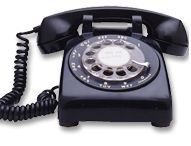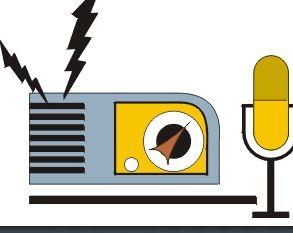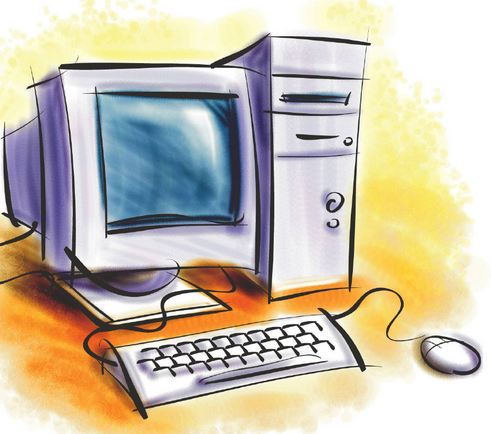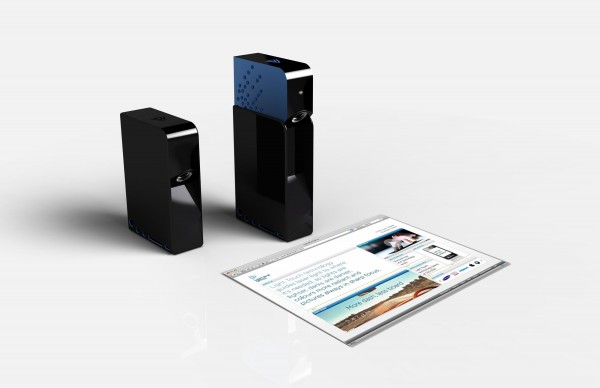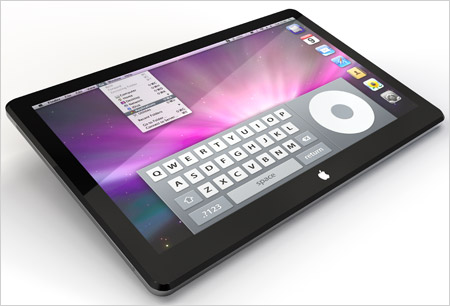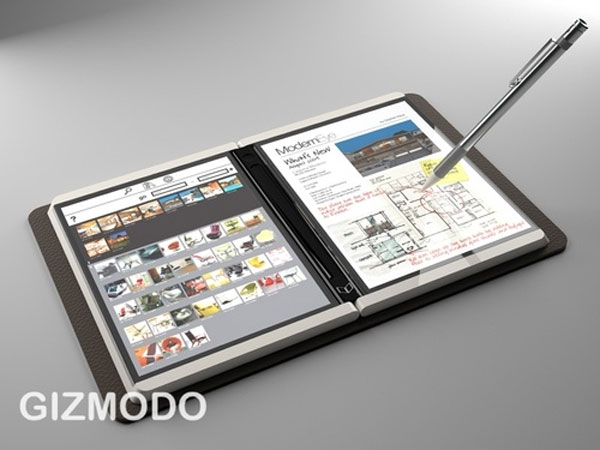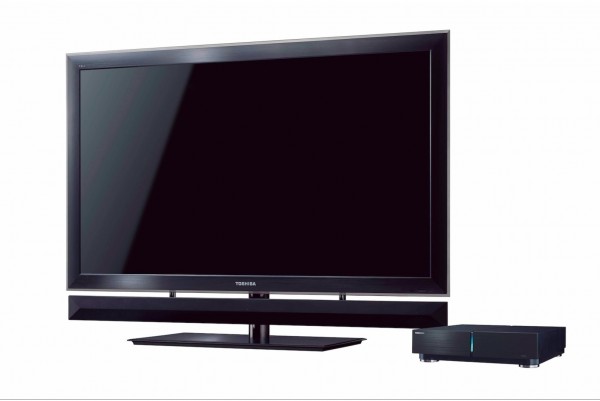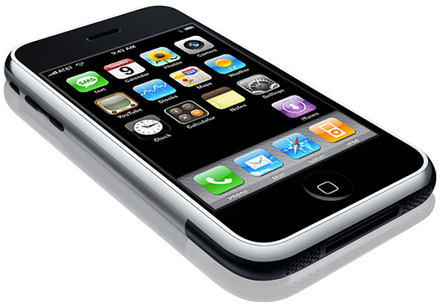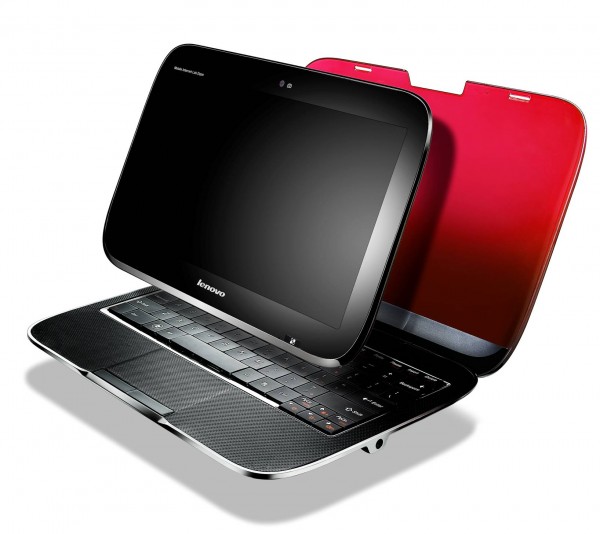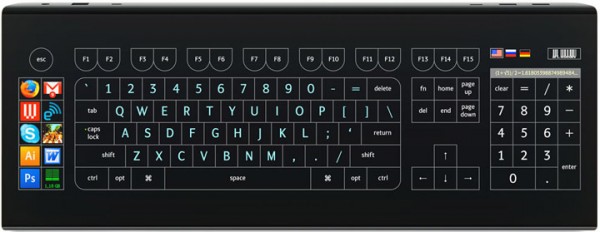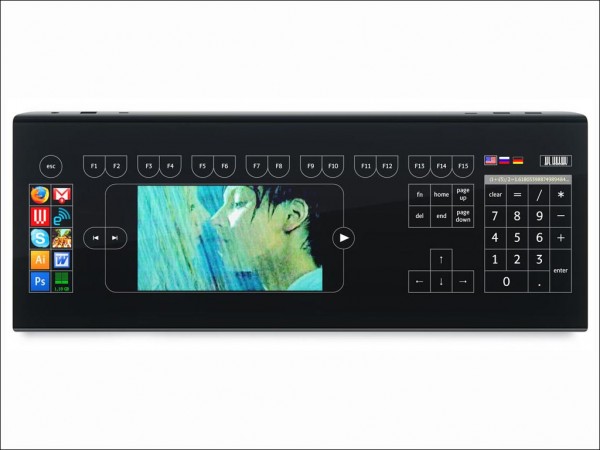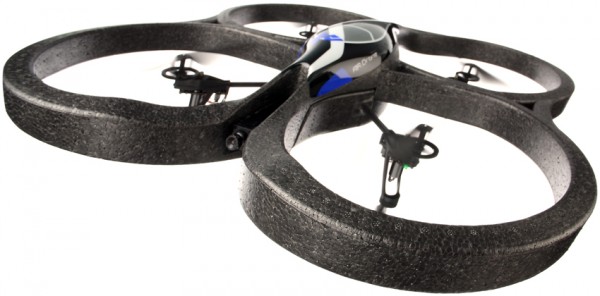1984 marked an era in innovation when the state of the art Mac was introduced, and it is since then the world is divided in two groups, the ones who have mac and others who don’t. The new technology marked the beginning of the style that had never been seen before. Equipped with high speed, longer battery life and most importantly elegant style, these oldies influenced the computer industry at large and lead to machines like Mac book pro.
1. Macintosh 128K – The First Macintosh (1984)

Release Date January 24, 1984
Introductory Price $2,495
Discontinued October 1, 1985
Operating System 1.0, 1.1, 2.0 , 2.1, 3.0, 3.2
CPU Motorola 68000 @ 8 MHz
Memory 128 KB (built-in)
The first Macintosh, Macintosh 128k was introduced on January 24, 1984; it was the first commercially successful personal computer to feature a mouse and a graphical user interface rather than a command-line interface. Its beige case contained a 9 in (23 cm) monitor and came with a keyboard and mouse. An indentation in the top of the case allowed the computer to be lifted and carried. It had a selling price of US$2,495. By today’s standards, its specs are laughably anemic. But the beloved box of bits was a far more affordable implementation of the graphical user interface. The built-in display was a one-bit black-and-white and contained a 400 kB, single-sided 3.5-inch floppy disk drive and dedicated no space to other internal mechanical storage. The unit lacked a cooling fan.The Macintosh was designed to achieve adequate graphics performance, which had previously required hardware costing over $10,000 US, at a price accessible to the middle class. This narrow goal resulted in an efficient design which traded off expandability but met or exceeded the baseline performance of its competitors.
The limitations of the first Mac soon became clear. In October 1985, Apple increased the Mac’s memory to 512 KB , but it was inconvenient and difficult to expand the memory of a 128 KB Mac.
2. Macintosh Plus (1986)
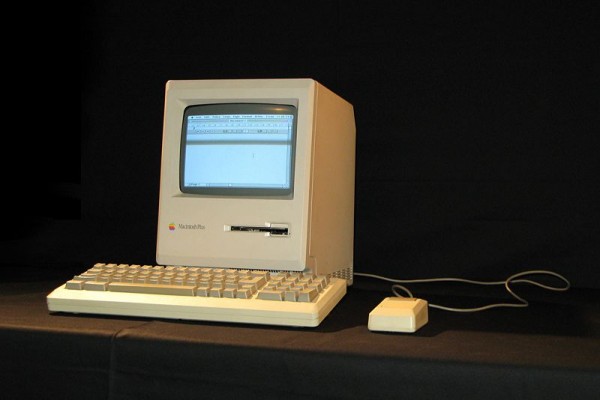
Release Date January 16, 1986
Introductory Price $2599
Discontinued October 15, 1990
Operating System 3.0–6.0.8, 7.0-7.5.5
CPU Motorola 68000 @ 8 MHz
Memory 1 MB, expandable to 4 MB (150 ns 30-pin SIMM)
The Macintosh Plus computer was the third model in the Macintosh line, introduced on January 16, 1986, two years after the original Macintosh and a little more than a year after the Macintosh 512K, with a price tag of US$2599. As an evolutionary improvement over the 512K, it shipped with 1 MB of RAM standard, expandable to 4 MB, and an external SCSI peripheral bus, among smaller improvements. It originally had the same generally beige-colored case as the original Macintosh, but in 1987, the case color was changed to the long-lived, warm gray “Platinum” color.
Introduced as the Macintosh Plus, it was the first Macintosh model to include a SCSI port, which launched the popularity of external SCSI devices for Macs, including hard disks, tape drives, CD-ROM drives, printers, and even monitors. Its SCSI implementation was engineered shortly before the initial SCSI spec was finalized and, as such, is not 100% SCSI-compliant. SCSI ports remained standard equipment for all Macs until the introduction of the iMac in 1998. The Macintosh Plus was the last classic Mac to have a phone cord-like port on the front of the unit for the keyboard, as well as the DE-9 connector for the mouse; models released after the Macintosh Plus would use ADB ports. The Mac Plus was the first of many Macintoshes to use SIMMs. It had a new 3.5-inch double-sided 800 KB floppy drive, offering double the capacity of previous Macs along with backward compatibility. A compact Mac, the Plus had a 9-inch 512×342 pixel monochrome display with a resolution of 72 PPI.
3. Macintosh XL (1985)
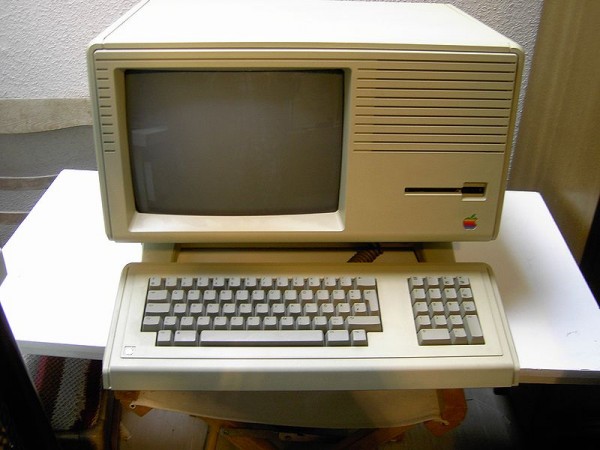
Release Date January 1, 1985
Introductory Price $3,995
Discontinued August 1, 1986
Operating System MacWorks XL/System 1.1 , MacWorks Plus II/System 1.1–6.0.8, 7.0–7.5.5
CPU Motorola 68000 @ 5 MHz
Memory 512 KB, expandable to 2 MB (Lisa DRAM card)
Macintosh XL was a modified version of the Apple Lisa personal computer made by Apple Computer, Inc. In the Macintosh XL configuration, the computer shipped with MacWorks XL, a Lisa program that allowed 64 K Macintosh ROM emulation. An identical machine was previously sold as the Lisa 2/10 with the Lisa OS only. The Macintosh XL had a 400K 3.5″ floppy drive and an internal 10 MB proprietary Widget hard drive with provision for an optional 5 or 10 MB external ProFile hard drive with the addition of a Parallel interface card. At the time of release, the Macintosh XL was colloquially referred to as the “Hackintosh”, although this name has also been used more generally to describe Macintosh computers assembled from unusual combinations of parts. Despite its relative success, the Macintosh XL was discontinued because it was literally unavailable. Parts had not been ordered to keep the XL in production and once the last of the parts ran out, Apple made the decision to shut down production for good.
4. Macintosh II (1987)

Release Date March 2, 1987
Introductory Price US $5500
Discontinued January 15, 1990
Operating System 3.3– 6.0.8, 7.0-7.5.5 or with 68030 32-bit upgrade Mac OS 7.6.1
CPU Motorola 68020 @ 16 MHz
Memory 1 MB, expandable to 20 MB (68 MB via FDHD upgrade kit) (120 ns 30-pin SIMM)
The Macintosh II models were “modular” systems which did not include built-in monitors and were intended for business use. Beginning with the Macintosh II and culminating in the Macintosh IIfx, the Mac II series was Apple Computer’s high-end line from 1987 to 1991. The Apple Macintosh II was the first personal computer model of the Macintosh II series in the Apple Macintosh line. (Not to be confused with the Apple II series of non-Macintosh computers.) Introduced in March, 1987 and retailing for US $5,498, the Macintosh II was the first “modular” Macintosh model, so called because it came in a horizontal desktop case like many PCs of the time. All previous Macintosh computers used an all-in-one design with a built-in black-and-white CRT. The Macintosh II introduced space for an internal hard disk (originally 20 MB or 40 MB) and an optional second floppy disk drive. It also was the first Macintosh computer, simultaneously with the Macintosh SE, to use the Apple Desktop Bus (ADB), introduced with the Apple IIGS, for keyboard and mouse interface. The primary improvement in the Mac II was Color QuickDraw in ROM, a color version of the graphics language which was the heart of the machine.
5. Macintosh SE (1987)

| Release date |
March 2, 1987 |
| Introductory price |
$2900 (dual floppy) US$3900 (with 20MB hard drive) |
| Discontinued |
October 15, 1990 |
| Operating system |
3.3-3.4, 4.0–6.0.2, 6.0.3–6.0.8, 7.0-7.5.5 |
| CPU |
Motorola 68000 @ 8 MHz |
| Memory |
(150 ns 30-pin SIMM) |
During the same year, was released the Macintosh SE , a personal computer manufactured by Apple between March 1987 and October 1990. This computer marked a significant improvement on the Macintosh Plus design and was introduced by Apple at the same time as the Macintosh II. It had a similar case to the original Macintosh computer, but with slight differences in color and styling. First compact Macintosh with space for an internal hard disk (originally 20 MB or 40 MB), or, if the user preferred, dual floppy drives. First compact Macintosh that featured an expansion slot (SE stood for “System Expansion”). Used the Apple Desktop Bus (ADB), introduced with the Apple IIGS, for keyboard and mouse interface. Improved SCSI support with faster data throughput. Better reliability and longer life expectancy due to the addition of a fan.
6. Macintosh Portable (1989)

Release Date September 20, 1989 (Original), October 15, 1990 (Backlit)
Introductory Price $6,500
Discontinued October 15, 1990 (Original), October 21, 1991 (Backlit)
Operating System 6.0.4 (Original) 6.0.7 (Backlit) – 7.5.5
CPU Motorola 68000 @ 16 MHz
Memory 1 MiB, expandable to 9 MiB, 8 MiB backlit version (SRAM)
The Macintosh Portable was Apple Computer’s first attempt at making a battery-powered portable Macintosh personal computer that held the power of a desktop Macintosh. Released on September 20, 1989, it was received with excitement from most critics but with very poor sales to consumers. Seemingly no expense was spared in the construction of the machine. It featured a black and white active-matrix LCD screen in a hinged cover that covered the keyboard when the machine was not in use. The mouse function was handled by a built-in trackball that could be removed and located on either side of the keyboard. It used expensive SRAM in an effort to maximize battery life and to provide an “instant on” low power sleep mode.
7. Macintosh LC “The Pizza Box Series” (1990s)

Release Date variable in series
Introductory Price variable in series
Discontinued variable in series
Operating System Bundled Mac OS
CPU PowerPC processors instead of Motorola 68k-based (except in LC-580)
Memory 4 MB (max 36 MB)
The Macintosh LC (meaning low-cost color) was Apple Computer’s product family of low-end consumer Macintosh personal computers in the early 1990s. The original Macintosh LC was released in 1990 and was the first affordable color-capable Macintosh. Due to its affordability and Apple II compatibility the LC was adopted primarily in the education and home markets. Together with the Mac IIsi, it introduced built-in audio input on the Mac. The “LC” name was subsequently used for a line of low-end Macintosh computers for several years and spanned the 68k to PowerPC transition.
8. Macintosh Quadra (1991)

Release Date October 21, 1991 (Quadra 700)
Introductory Price $6000
Discontinued September 15, 1994
Operating System System 7.0.1-System 7.1.2, System 7.5-Mac OS 8.1, or with PowerPC upgrade, Mac OS 9.1
CPU Motorola 68040 @ 25 MHz
Memory 4 MiB, expandable to 68 MiB (80 ns 30-pin SIMM)
The Macintosh Quadra series was Apple Computer’s product family of professional high-end Apple Macintosh personal computers built using the Motorola 68040 CPU. The first two models in the Quadra line were introduced in 1991, and the name was used until the Power Mac was introduced in 1994. The product manager for the Quadra family was Frank Casanova who was also the Product Manager for the Macintosh IIfx. The first models were the Quadra 700 and Quadra 900, both introduced in 1991. The Quadra replaced the Macintosh II series as the high end computer in the Macintosh product line.
9. Powerbook “First Mac Laptop” (1991)
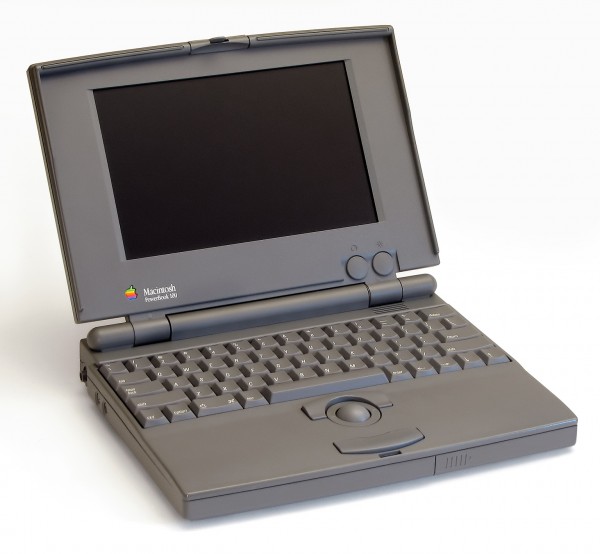
Release Date October 21, 1991
Introductory Price US$2,300
Discontinued September 3, 1992
Operating System System 6.0.8L, 7.0.1–7.5.5
CPU Motorola 68000 16 MHz
Memory 2 to 8 MB
The PowerBook 100 was the low-end model of the first three simultaneously released PowerBooks. Its CPU and overall speed closely resembled those of its predecessor, the Macintosh Portable. In October 1991 Apple released the first three PowerBooks: the low-end PowerBook 100, the more powerful PowerBook 140, and the high end PowerBook 170, the only one with an active matrix display. These machines caused a stir in the industry with their compact dark grey cases, use of a trackball, and the clever positioning of the keyboard which left room for palmrests on either side of the pointing device. Portable PC computers at the time tended to have the keyboard forward towards the user, with empty space behind it, so this was a surprising innovation and set the standard layout all future notebook computers would follow.
10. Macintosh Color Classic (1993)

| Release date |
February 10, 1993, October 01, 1993 (CC II) |
| Introductory price |
1400 |
| Discontinued |
May 16, 1994, May 16, 1995 (CC II) |
| Operating system |
System 7.1, System 7.1.1-Mac OS 7.6.1 |
| CPU |
Motorola 68030 @ 16 MHz, 33 MHz (CC II) |
| Memory |
4 MB, expandable to 10 MB/36 MB (CC II) (80 ns 72-pin SIMM) |
The Macintosh Color Classic was the first color compact Apple Macintosh computer. It was essentially a Macintosh LC II with an integrated 10″ Sony Trinitron color display with the same 512×384 pixel resolution as an LC II with the Macintosh 12” RGB monitor. This integrated unit resembled the original Mac series, albeit slightly expanded. The combination of the low-cost color Macintosh and Apple IIe compatibility was intended to encourage the education market’s transition from Apple II models to Macintoshes.
11. Power Mac (1994)

Release Date 1994
Introductory Price variable in series
Discontinued 2006
Operating System Mac OS
CPU PowerPC
Memory variable in series
Power Macintosh , later Power Mac , was a line of Apple Macintosh workstation-class personal computers based on various models of PowerPC microprocessors that was developed, marketed, and supported by Apple Inc. from March 1994 until August 2006. The first models were the Power Macintosh 6100, 7100, and 8100, which offered speeds ranging from 60 to 110 MHz. These machines replaced Apple’s Quadra series of personal computers, and were housed in cases very similar to systems sold by Apple up to that point.
The Power Macintosh 6100 was Apple Computer’s first computer to use the new PowerPC RISC type processor created by IBM and Motorola. It came in the Centris 610’s “pizza box” low-profile case, and superseded the Quadra series that used Motorola’s 68040 processor, Apple’s previous high end workstation line. The Power Mac went on to become the mainstay of Apple’s top-end offerings for twelve years, through a succession of case designs, four major generations of PowerPC chips, and a great deal of press coverage, design accolades, and technical controversy. In August 2006, the Power Mac’s retirement was announced at Apple’s Worldwide Developers Conference by Steve Jobs and Phil Schiller, making way for its replacement, the Mac Pro.
12. Twentieth Anniversary Macintosh “TAM” (1997)

Release Date March 20, 1997
Introductory Price US$7,499
Discontinued March 14, 1998
Operating System Mac OS
CPU PowerPC 603e
Memory 2 slots: 32 MiB, max 128 MiB (2 × 64 MiB)
The Twentieth Anniversary Macintosh was a limited-edition home computer produced by Apple Computer, Inc., in 1997 in celebration of its 20th anniversary. While the machine is often regarded as a stylistic landmark, it was met with lukewarm sales, and was derided for its price and for championing form over function.
13. iMac (1998)

| Release date |
August 15, 1998 (iMac G3) |
| Discontinued |
March 18, 2003 |
| Operating system |
Mac OS 8, Mac OS 9, Mac OS X |
| CPU |
PowerPC 750, 233 MHz – 700 MHz (SE) |
The iMac G3 was the first model of the iMac line of personal computers made by Apple Inc. (formerly Apple Computer, Inc.). The iMac G3 is an all-in-one personal computer, encompassing both the monitor and the system unit in a single enclosure. Originally released in striking bondi blue and later a range of other brightly colored, translucent plastic casings, the iMac shipped with a keyboard and mouse in matching tints. Aesthetically, the iMac was dramatically different from any other mainstream computer ever released. The iMac was the first computer to exclusively offer USB ports as standard. A radical step was to abandon the 3½-inch diskette drive (which had been present in every Mac since the first one in 1984). Apple argued that recordable CDs, the internet, and office networks were quickly making diskettes obsolete.
14. iBook (1999)

| Release date |
July 21, 1999 |
| Discontinued |
May 1, 2000 |
| CPU |
PowerPC G3, 300–466 MHz |
The iBook was another of Jonathan Ive’s babies. Although ridiculed as a Hello Kitty toilet seat, Apple’s first portable computer brought Wi-Fi to the masses with its optional AirPort wireless networking. The line was targeted at the consumer and education markets, with lower specifications and prices than the PowerBook, Apple’s higher-end line of laptop computers. Three distinct designs of the iBook were introduced during its lifetime. The first design, known as the “Clamshell”, was a significant departure from portable computer designs at the time due to its shape, bright colors, incorporation of a handle, and wireless networking. Two years later, a second line abandoned the original form factor in favor of a more conventional rectangular design. In October 2003, the third design added a PowerPC G4 chip and a slot-loading drive.Apple replaced the iBook line with the MacBook in May 2006 during Apple’s transition to Intel processors.
15. G4 Cube (2001)

| Introductory price |
$1599 |
| Discontinued |
July 2001 |
| CPU |
PowerPC G4, 450–500 MHz |
The Power Mac G4 Cube demonstrated that Apple was capable of a mental meltdown. The 8-inch cube looked cool, and it got a chilly reception. Sure, it had radical industrial design, but it was too expensive, underpowered and hard to upgrade. The diminutive 8″ x 8″ x 8″ cube, suspended in a 10″ tall Acrylic (PMMA) enclosure, housed a PowerPC G4 processor running at 450 or 500 megahertz, and had an unconventional vertical slot-loading DVD-ROM or CD-RW drive. A separate monitor — with either an ADC or VGA connection — was required for the Cube, in contrast to the all-in-one iMac series. Also unlike the iMacs, it had an upgradeable video card in a standard AGP slot. However, there was not enough space for full-length cards. The Cube also featured two FireWire ports and two USB ports for connecting peripherals. Sound was provided by an external USB amplifier and a pair of Harman Kardon speakers. Although the USB amplifier had a standard mini-plug headphone output, it lacked any audio input. The Cube also used a silent, fanless, convection-based cooling system like the iMacs of the time.
Bonus:
Apple 1 – Apple’s First Product (1976)

Apple was established on April 1, 1976 by Steve Jobs, Steve Wozniak, and Ronald Wayne, to sell the Apple I personal computer kit. They were hand-built by Wozniak and first shown to the public at the Homebrew Computer Club. The Apple I was sold as a motherboard (with CPU, RAM, and basic textual-video chips)—less than what is today considered a complete personal computer. The Apple I went on sale in July 1976 and was market-priced at $666.66. “The first Apple was just a culmination of my whole life.” – Steve Wozniak, Co-Founder Apple Computers. On April Fool’s Day, 1976, they released the Apple I computer and started Apple Computers. The Apple I was the first single circuit board computer. It came with a video interface, 8k of RAM and a keyboard. The system incorporated some economical components, including the 6502 processor (designed by Rockwell and produced by MOS Technologies) and dynamic RAM. Just to add, until 1984, Apple was non-macintosh.






